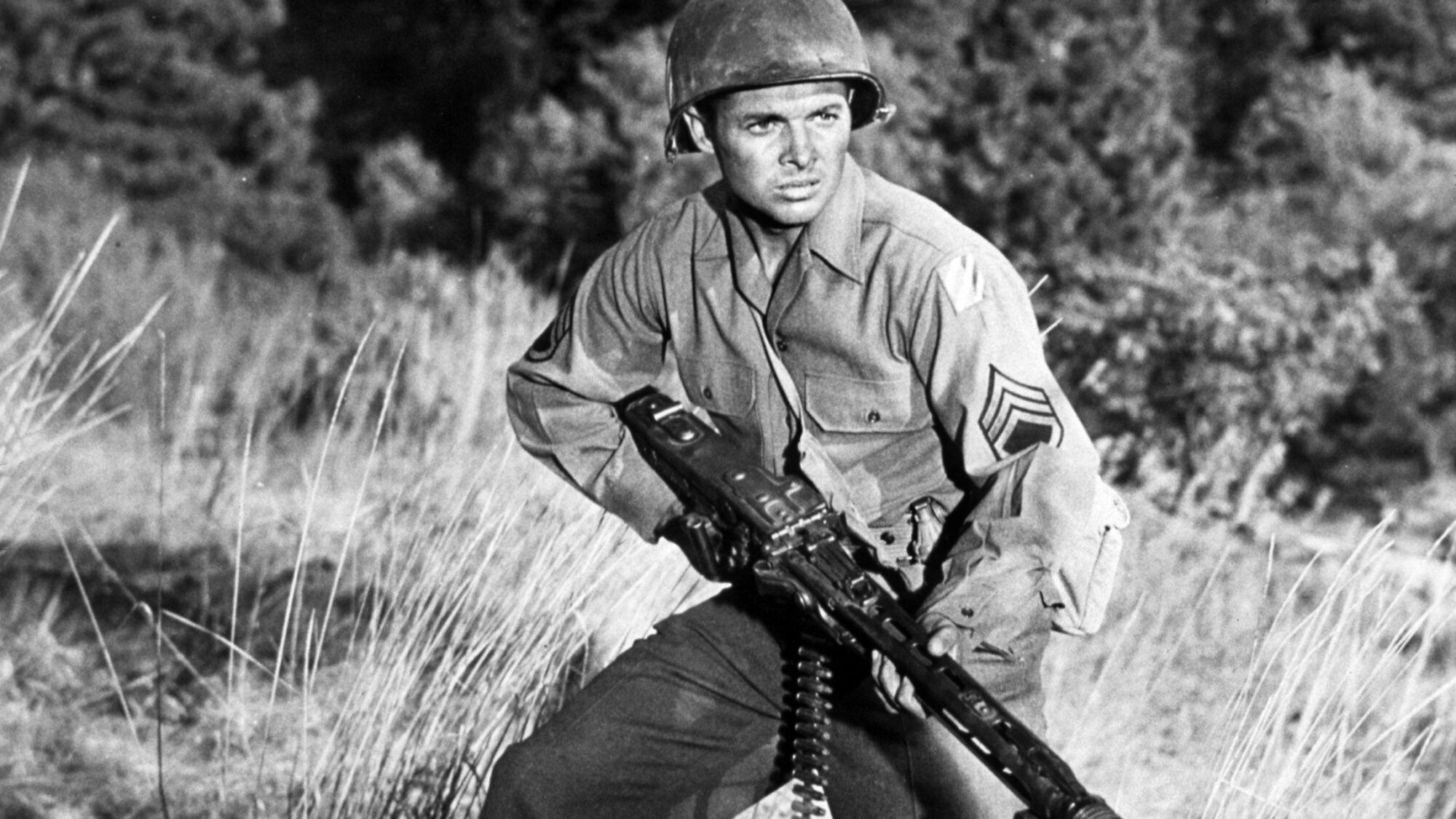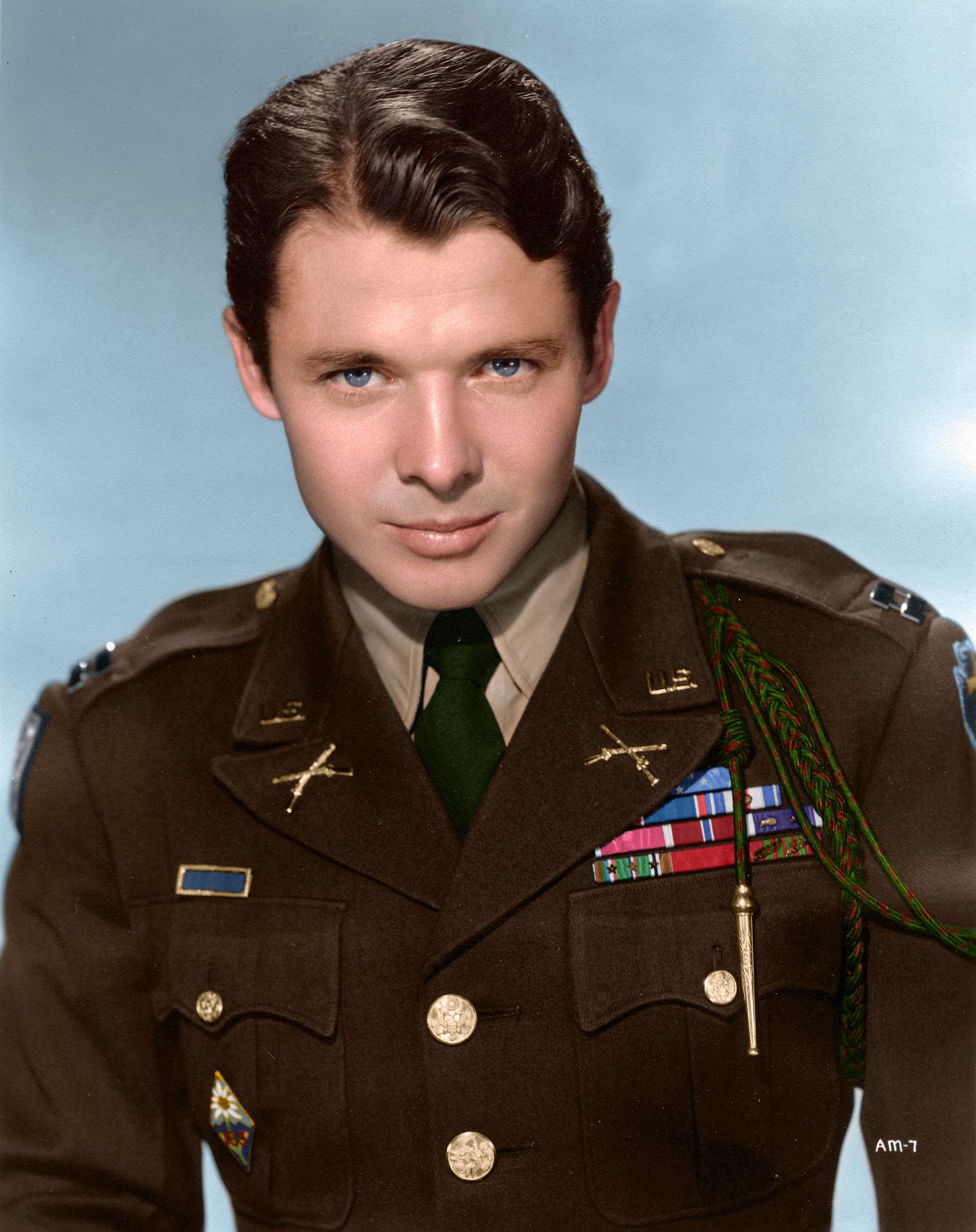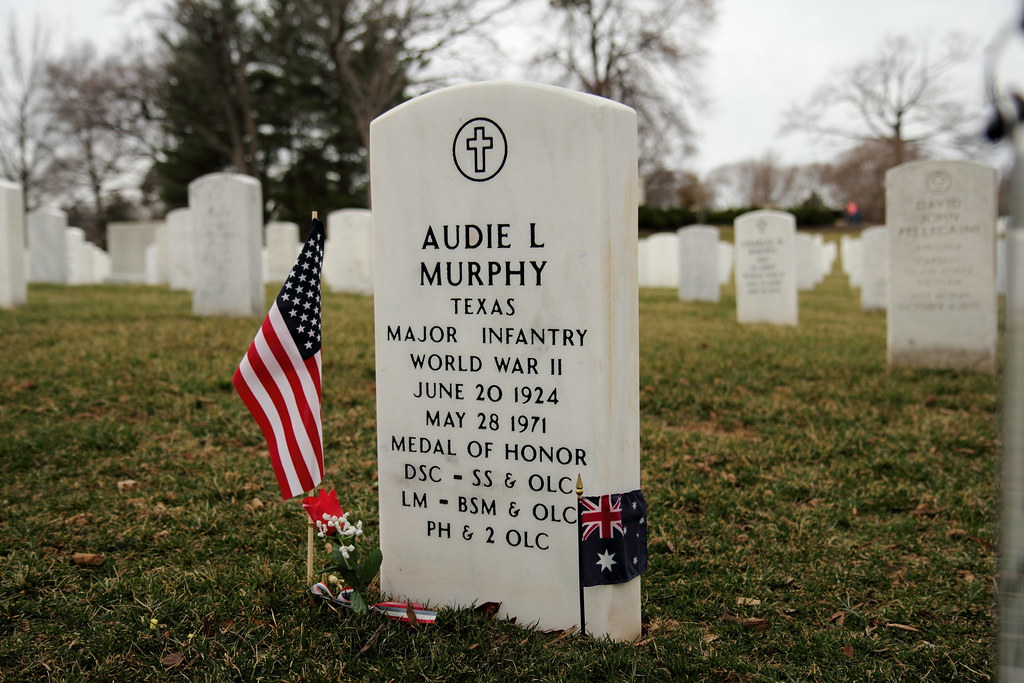

THE ENIGMA THAT WAS AUDIE MURPHY
This writer was born in 1947 and makes no apologies for being an Audie Murphy fan since childhood, long before learning of his extraordinary combat record as a soldier in the US Army during World War Two. While other boys at my school idolized Roy Rogers, Hopalong Cassidy and John Wayne, I retained a soft spot for Audie as my cowboy hero, although he had a momentary challenger in the form of equally diminutive Alan Ladd after I saw Shane (1953) for the first time.
Audie Leon Murphy entered this world in 1924 via Kingston, Texas. He never liked his Christian name, preferring to use Leon up until the time he learned that Leon was a redneck name. From that time onwards he was happy to be known as Audie or Murph. After being turned down by both the Navy and the Marines, he enlisted in the Army in June 1942, on his 18th birthday. He saw action against Axis forces in Sicily, mainland Italy, and eventually in France, fighting in seven major campaigns over three years, while rising from private to a battlefield commission as a second lieutenant.

Still from To Hell and Back (1955)
Murphy’s citation for his Medal of Honour was outstanding and is worth recording here in its entirety: ‘Second Lieutenant Murphy commanded Company B, which was attacked by six tanks and waves of infantry. 2nd Lt. Murphy ordered his men to withdraw to prepared positions in a woods, while he remained forward at his command post and continued to give fire directions to the artillery by telephone. Behind him, to his right, one of our tank destroyers received a direct hit and began to burn. Its crew withdrew to the woods. 2nd Lt. Murphy continued to direct artillery fire which killed large numbers of the advancing enemy infantry. With the enemy tanks abreast of his position, 2nd Lt. Murphy climbed on the burning tank destroyer, which was in danger of blowing up at any moment, and employed its 50 calibre machine gun against the enemy. He was alone and exposed to German fire from three sides, but his deadly fire killed dozens of Germans and caused their infantry attack to waver. The enemy tanks, losing infantry support, began to fall back. For an hour the Germans tried every available weapon to eliminate 2nd Lt. Murphy, but he continued to hold his position and wiped out a squad which was trying to creep up un-noticed on his right flank. Germans reached as close as 10 yards, only to be mown down by his fire. He received a leg wound, but ignored it and continued the single-handed fight until his ammunition was exhausted. He then made his way to his company, refused medical attention, and organized the company in a counterattack which forced the Germans to withdraw, His directing of artillery fire wiped out many of the enemy; he killed or wounded about 50. 2nd Lt. Murphy’s indomitable courage and his refusal to give an inch of ground saved his company from possible encirclement and destruction, and enabled it to hold the woods which had been the enemy’s objective.’

2nd Lt. Audie Murphy US Army
Murphy was not your average hero type. He was baby-faced, shy and soft-spoken. His boyish appearance saw him looking much younger than his years when chosen to play himself in To Hell and Back in 1955, more than a decade after the exploits mentioned above had made him famous. For all his steely-eyed resolve and undoubted courage, the war had taken its toll on him psychologically. He suffered post-war from ‘battle fatigue’, now known as Post Traumatic Stress Disorder (PTSD), and endured bouts of insomnia and nightmare-riddled sleep. While wed to actress Wanda Hendrix (Feb ’49 until Apr ’50) he once held her at gunpoint, and was known to sleep with a loaded .45 semi-automatic nearby. Murphy never smoked and seldom drank alcohol. He turned down beer commercials. ‘How would it look: ‘WAR HERO DRINKS BOOZE’? I couldn’t do that to kids.’ Murphy had principles that he adhered to, yet he was also known to have a hair-trigger temper. When he became involved in a bar fight, he was fortunate to be acquitted of an attempted murder charge, such were the serious nature of the injuries he inflicted on his adversary. Director Don Siegel once told an interviewer that the volatile actor often carried a pistol on the set of The Gun Runners (1958) and many of the cast and crew were afraid of him. Conversely, Murphy’s friends in Hollywood were mostly character actors and film crew members, cameramen, makeup artists, horse wranglers and stunt people (male and female). Furthermore, he was often protective of them and helped many of them succeed in their careers. While staying with a wealthy friend in Dallas, he blew off a party full of wealthy people to go hang out with the African-American kitchen staff and compliment them on their cooking.
James Cagney liked the look of Audie when they met after the war, and suggested he try acting. Audie’s career spanned forty-four films, (most of them westerns), but it included the biographical To Hell and Back which became Universal’s biggest box-office hit until Jaws came along twenty years later! Murphy and the dialogue in his pictures did not change, he said, even after he turned forty, ‘Only the horses changed’, he quipped. When Universal Studio decided to focus on TV, the demise of the cheap western took place around the same time and Murphy fell upon hard times as acting opportunities dried up. He declared bankruptcy in 1968. Three years later, he was a passenger on a light plane when it encountered thick fog and crashed in Virginia, killing all aboard

When the US Government replaced the tombstones at Arlington National Cemetery, tombstones of Medal of Honour recipients were embossed in gold leaf, but Murphy’s family requested that the ‘Medal of Honour’ on his tombstone remain plain, as he would have wanted. [‘I never liked being called ‘the most decorated soldier’, Murphy had said. ‘There were so many guys who should have gotten medals and never did – guys who were killed.’] His is the second most-visited grave at Arlington, after that of John F. Kennedy.

Leave a Reply